The evolution of noodles is more than a culinary tale—it’s a story of migration, invention, and cultural identity. From ancient millet noodles discovered in China to modern-day ramen bowls and gluten-free pasta, noodles have crossed continents and millennia, adapting to the tastes and tools of each generation. Today, they represent comfort food in Tokyo, a family tradition in Italy, and even innovation in plant-based diets.
In this article, we’ll explore how noodles first appeared over 4,000 years ago, how they spread through trade and empire, and how they continue to evolve with modern technology and health trends. You’ll also learn about evolution noodles, cultural variations, and how archaeologists helped reshape what we thought we knew about the noodle’s true birthplace.
Learn more about the art of stretching dough in our guide on Hand-Pulled Noodles—a tradition that spans centuries and borders.
Origins of Noodles – Where It All Began
The 4000-Year-Old Noodle Discovery in China
In 2005, at an archaeological dig in Lajia, northwest China, scientists made a stunning discovery: a 4000-year-old bowl of noodles. This overturned pot, sealed in silt from an ancient earthquake, contained perfectly preserved strands of millet-based noodles. It instantly became one of the oldest known examples of cooked noodles in human history.
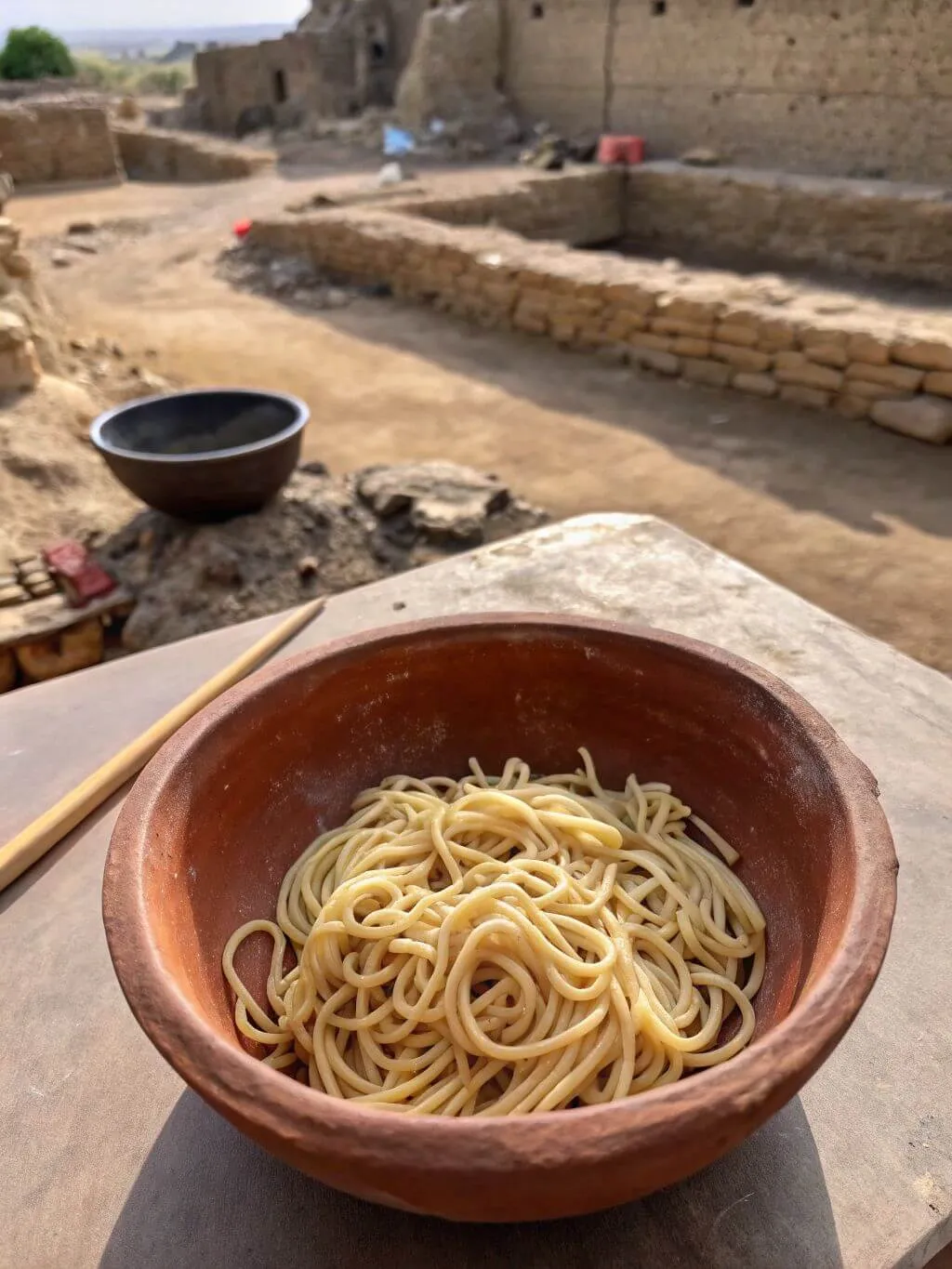
This find rocked the culinary world. For years, the popular myth had credited Italy or even Marco Polo for introducing noodles to Europe. But this clay pot told a different story—that noodles originated independently in China long before European pasta came to be.
Made without wheat, these noodles were long, delicate, and hand-pulled. They reflected a deep knowledge of starch gelatinization and dough processing, hinting that noodle-making was already a sophisticated art during the Neolithic period.
Don’t miss our nostalgic Homemade Noodles Recipe that brings ancient techniques into your kitchen today.
How Archaeological Evidence Reshaped Noodle History
The evidence from Lajia, combined with ancient Han Dynasty references (202 BC–220 AD), helped historians realize that noodles weren’t a derivative dish—they were central to Asian food identity thousands of years ago.
Illustrations, tomb inscriptions, and food preparation records revealed tools used for noodle-making, like dough rollers and slicing boards. The consistency across these findings showed that noodles were not just accidental food—they were carefully crafted, regularly consumed, and deeply tied to cultural rituals.
The discovery also helped redefine the question historians were asking. Instead of “Who invented noodles?” the real question became, “How did different civilizations create their own versions of noodles independently?” From China’s lamian to Italy’s spaghetti, the timeline began to reveal a parallel evolution—a shared culinary thread woven through time and geography.
Discover great ideas like noodle innovation and timeline diversity in our Noodle Types and Varieties Guide.
Ancient Noodle Traditions Across Continents
Noodles in Early Chinese Dynasties and Imperial Cuisine
When tracing the evolution of noodles, it’s impossible to overlook ancient China, where noodles weren’t just meals—they were part of a spiritual and ceremonial experience. As early as the Han Dynasty (202 BC–220 AD), noodles appeared in detailed texts as offerings to ancestors, symbols of long life, and daily nourishment.
Noodle innovation flourished during the Tang and Song Dynasties, shaping many styles we enjoy today. From hand-pulled lamian to thin wheat noodles floating in bone broth, each dynasty refined techniques that reflected local climate, tools, and grains. These traditions are still visible in dishes served across Asia today.
By the Yuan era, noodle artisans emerged in major cities. Markets bustled with vendors who twisted, sliced, or pulled dough into elaborate strands. As noodle-making became more artistic and accessible, the evolution of noodles in Chinese imperial cuisine set the global stage for future adaptations in both the East and West.
Looking for inspiration? Try this cultural deep dive into Noodle Recipes & Cooking Techniques and re-create traditional styles at home.
Mediterranean Contributions: Early Pasta in Ancient Rome
While China nurtured its noodle mastery, the Mediterranean developed its own unique strand in the evolution of noodles. Ancient Roman cookbooks like Apicius described sheets of flour-and-water dough, known as lagana, boiled or layered with savory sauces—an early version of lasagna. These were not just inventions of hunger, but reflections of social structure and culinary creativity.
The Marco Polo noodle myth? Historians say it’s been debunked. Instead, the evolution of noodles in the Mediterranean shows how cultures independently developed pasta-like dishes suited to local needs. For example, the Arab world introduced itriyya, a dried noodle that was easy to store and perfect for desert travel. This innovation later influenced Sicilian and southern Italian cuisine during the 9th century.
Whether soft strands floating in Chinese broths or flat sheets in Roman feasts, the evolution of noodles clearly occurred on parallel tracks—shaped by regional resources, trade routes, and the desire to preserve food across time.
Discover great ideas like historical fusion cuisine in Immigrant Spaghetti—a dish that perfectly embodies the global spirit of noodles.
Medieval Era & Global Expansion of Noodles
Silk Road Influence on Noodle Spread
One of the most transformative stages in the evolution of noodles occurred during the expansion of the Silk Road. These trade routes connected the Far East to the Middle East and Europe, providing not just economic opportunity but a culinary crossroads where ingredients, recipes, and food philosophies intertwined.
As Chinese traders ventured west, they carried their noodle-making skills across continents. These techniques quickly influenced the cuisines of Central Asia, Persia, and the Arab world. In return, local cultures adapted the concept of noodles into their own culinary traditions—developing stir-fried, spiced, or broth-infused variations that fit nomadic lifestyles. This was a monumental phase in the evolution of noodles, where techniques were shared, adapted, and embedded into new regions.
What had once been a regional staple became a global food item. Historical accounts from 9th-century Persia describe wheat dough dishes that bear striking resemblance to Asian lamian. This convergence of preparation methods shows how the evolution of noodles wasn’t linear—it was global, fluid, and influenced by centuries of trade and migration.
Learn more about the roots of tradition with our in-depth article on Hand-Pulled Noodles—a foundational element in the evolution of noodles.
Introduction of Pasta to Europe via Trade Routes
By the 9th century, the evolution of noodles was taking firm root in Southern Europe. Long before Marco Polo returned from his journey through Asia, forms of dried noodles already existed in Sicily and the Arab-influenced regions of Italy. The Arab world had introduced itriyya, a dried noodle product made from durum wheat semolina. These early noodles were light, travel-friendly, and ideal for long-term storage—making them a pivotal chapter in the evolution of noodles.
Italy quickly adapted and elevated these concepts. By the 13th century, pasta was a booming industry. Pasta guilds formed in Genoa and Naples, and documentation even shows the existence of early pasta export businesses. From lasagna sheets to coiled trofie, Italian artisans transformed imported techniques into culturally significant dishes—proving that the evolution of noodles in Europe was as much about creativity as it was about adaptation.
Through each phase of European history—from Roman lagana to Renaissance ravioli—the evolution of noodles remained anchored in shared ideas: flour, water, hands, and heritage. The noodle became a medium for both survival and celebration, echoing its significance across civilizations.
Discover great ideas like the Mediterranean adaptations of ancient noodle styles in our visual catalog of Noodle Types and Varieties, which reflects the full scope of the evolution of noodles.
The Industrial Revolution and Noodle Modernization
Invention of Dried and Packaged Noodles
As modern machinery emerged in the 18th and 19th centuries, the evolution of noodles entered a brand-new phase: industrialization. Until this point, noodles were labor-intensive—kneaded, rolled, cut, and cooked by hand. But the mechanized roller, invented during the Industrial Revolution, changed all that.
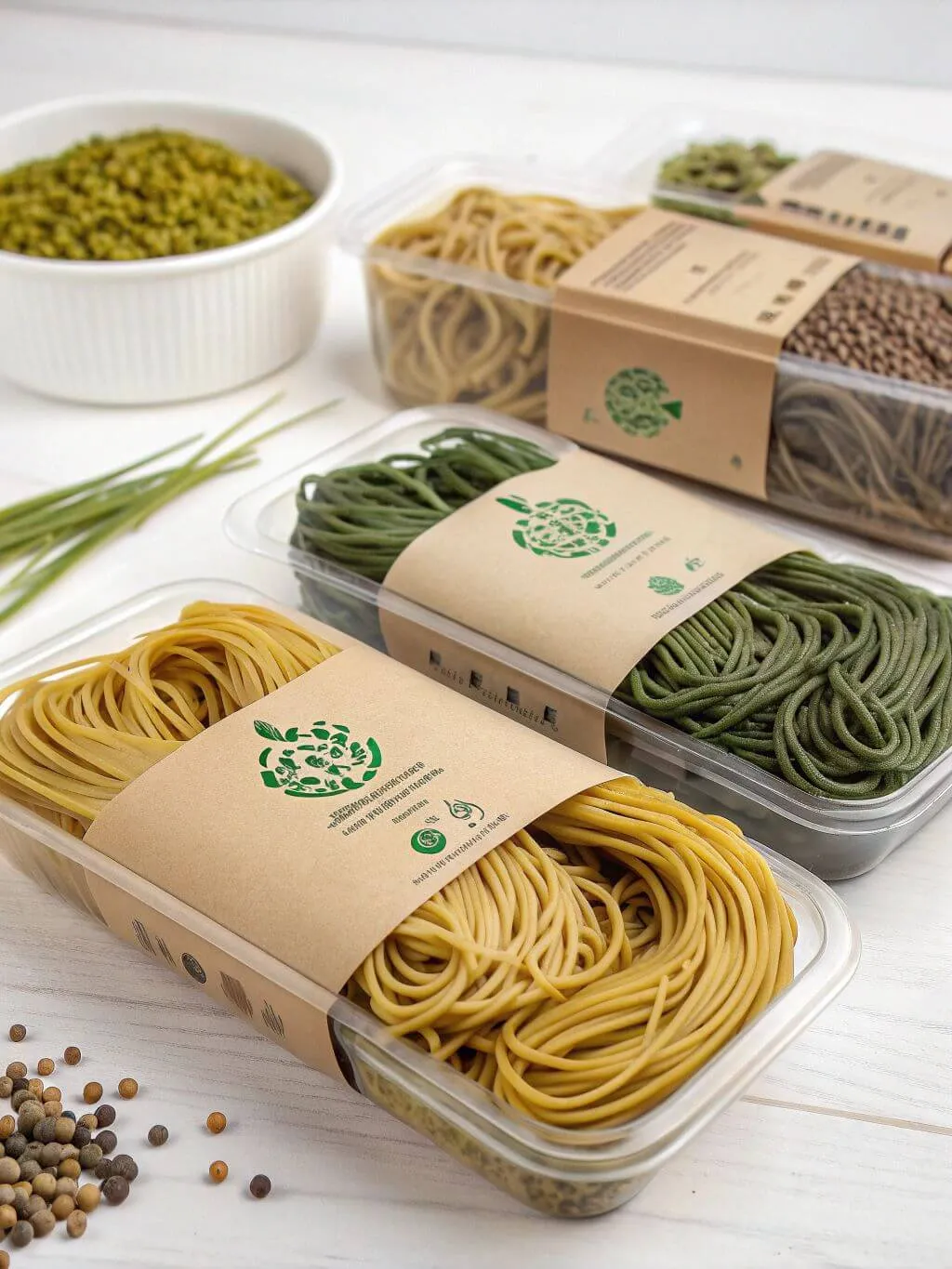
Suddenly, mass noodle production became possible. Factories in Europe, especially in Italy, began creating boxed pasta for export. At the same time, industrial flour milling meant more consistent dough quality, which accelerated the evolution of noodles into a shelf-stable pantry item for the average household.
Meanwhile, Japan and China were developing their own variations on modernization. In Japan, dried udon and soba became popular street and home staples. These shelf-stable noodles could now be sold to urban workers, soldiers, and even exported across Asia.
Looking for ideas to make noodles from scratch or modify store-bought varieties? Check out our techniques inside Noodle Recipes & Cooking Techniques.
Rise of Instant Noodles in 20th Century Japan
Momofuku Ando’s 1958 invention of instant noodles revolutionized convenience food. Motivated by post-war food shortages, Ando developed a method to flash-fry cooked noodles, dramatically extending shelf life while maintaining taste and texture.
This new form of noodles—cheap, fast, and filling—quickly became a worldwide phenomenon. The first Cup Noodles arrived in 1971, and global demand exploded. Instant noodles were no longer just a Japanese innovation; they were now part of a global food strategy for convenience and affordability.
From college dorms to emergency food aid, instant noodles played a critical role in the evolution of noodles as a universal staple. Today, the industry produces over 100 billion servings annually, with dozens of regional flavor varieties and specialized packaging for every market.
Don’t miss our look into modern reinterpretations like Easy 5-Ingredient Vegan Pasta Noodles Recipe, where convenience meets conscious cooking—another evolution in action.
Cultural Evolution of Noodles by Region
Japan’s Ramen, Italy’s Spaghetti, and Korea’s Japchae
The evolution of noodles is deeply rooted in regional identity and tradition. While the core concept—flour mixed with water and shaped into strands—remains the same, each region has adapted noodles to its ingredients, palate, and cultural rituals.
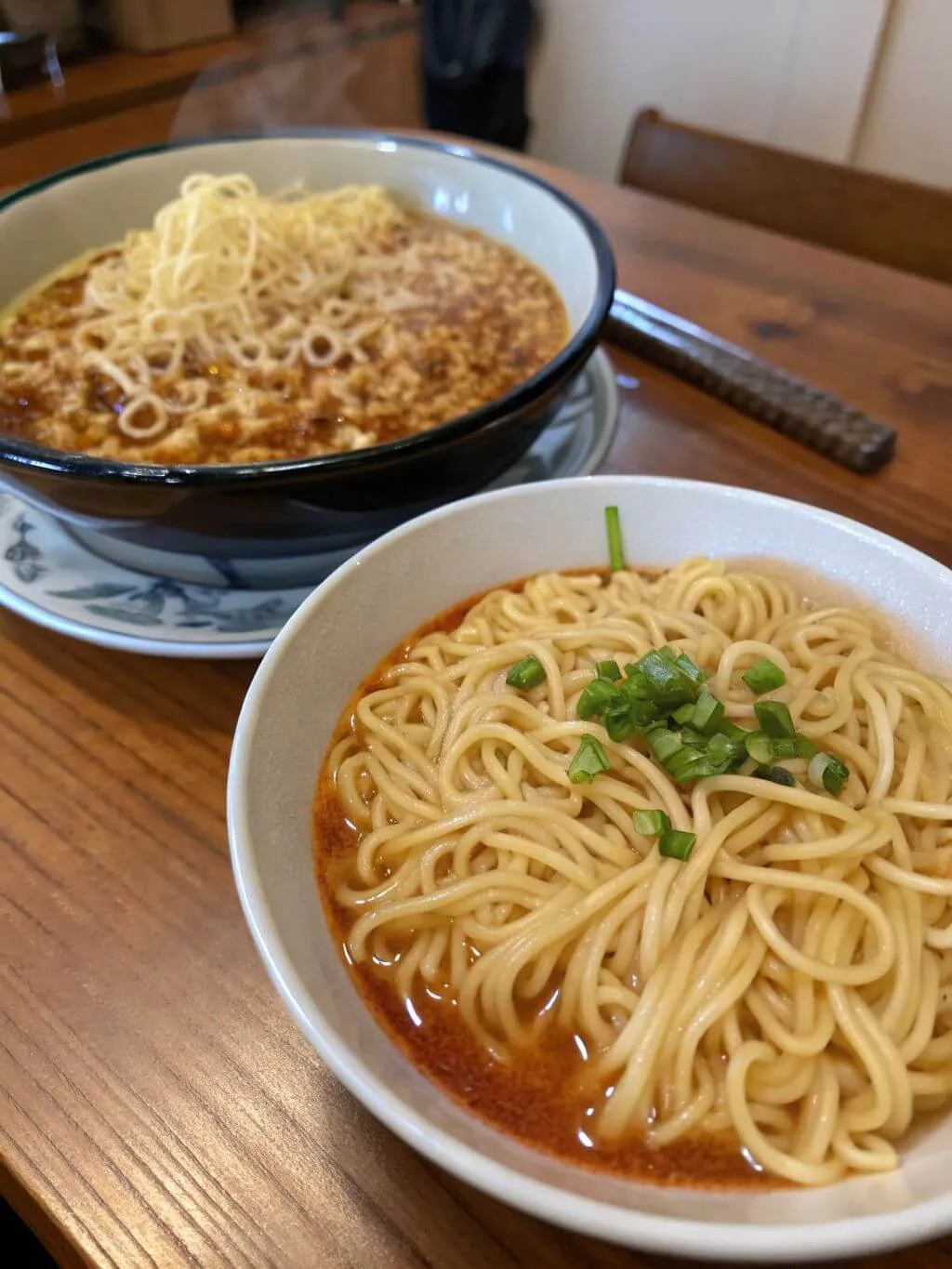
In Japan, ramen evolved from Chinese wheat noodles into a rich, soulful dish that reflects the country’s seasonal flavors and meticulous technique. Tonkotsu broth, soy sauce, and chewy noodles—Japan’s comfort food at its finest.
In Italy, spaghetti stands as a symbol of national pride—long, thin noodles paired with marinara or carbonara, enjoyed globally. Italian pasta reflects structure and intention: every shape designed for a specific sauce.
Meanwhile, Korea introduced Japchae, a dish of sweet potato noodles stir-fried with sesame oil, vegetables, and meat. Once reserved for royalty, Japchae is now a beloved staple at celebrations and holidays.
Don’t miss our feature on Somen Noodles With Tsuyu Sauce—a refreshing example of regional noodle mastery from Japan.
How Regional Flavors Reshaped Traditional Recipes
Noodles didn’t just change form across regions—they took on entirely new flavors and identities. In Southeast Asia, noodles were transformed through the use of fish sauce, coconut milk, and tamarind, giving rise to dishes like Thai pad see ew and Vietnamese pho. In India, wheat noodles took on a spiced flair with turmeric, cumin, and masala blends.
Latin America joined the noodle wave through fideo pasta, short thin noodles toasted before cooking and often simmered in brothy tomato-based soups. Even in the U.S., macaroni and cheese has become a noodle mainstay, showing how local ingredients and culture can reinvent old traditions.
All these examples remind us that the evolution of noodles is not a straight line—it’s a sprawling, global journey. From ancient bowls in Lajia to fusion plates in Los Angeles, noodles have adapted to every place they’ve touched.
Discover great ideas like fusion-based inspiration inside our cross-cultural guide to Immigrant Spaghetti—a dish that tells the story of noodles through migration and memory.
Evolution Noodles in the Modern Kitchen
What Are “Evolution Noodles”?
In today’s culinary landscape, the term “evolution noodles” refers not just to historical progress but to the modern reinvention of noodles through technique, flavor, and fusion. It’s a term used by chefs, food scientists, and home cooks alike to describe noodles that break tradition—pushing boundaries in texture, ingredients, and presentation.
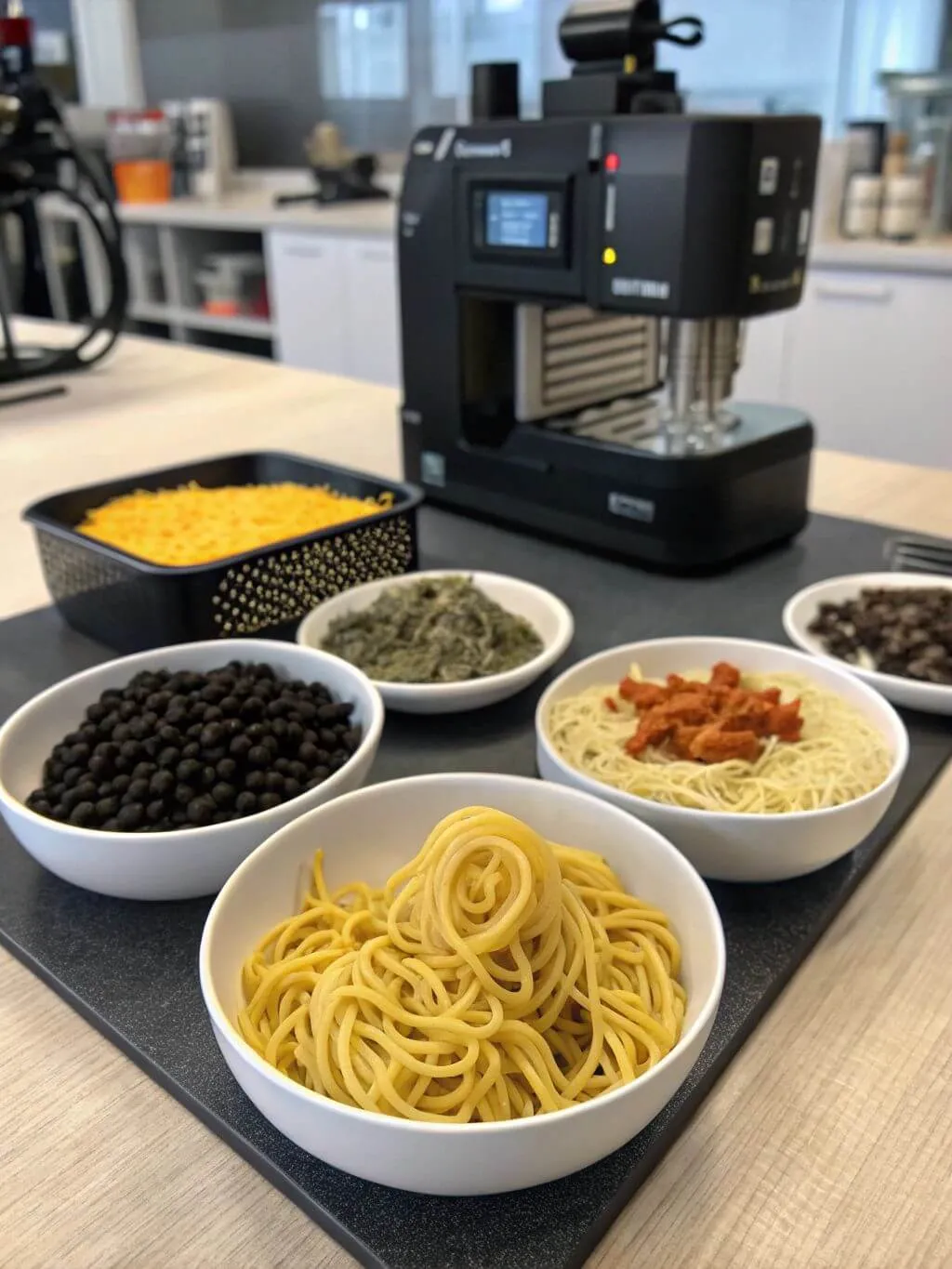
Think noodles made from spiralized vegetables, quinoa, chickpeas, or even algae. Or how about lasagna layered with kimchi and tofu, or ramen infused with truffle oil? These aren’t traditional dishes—they’re modern innovations that illustrate how the evolution of noodles continues every day in kitchens around the world.
Many of these dishes are born from necessity: dietary restrictions, sustainability goals, or culinary curiosity. But what unites them all is the noodle’s versatility. Whether gluten-free, vegan, high-protein, or infused with adaptogens, evolution noodles represent how far we’ve come—and how far we’re still going.
Check out one of the most accessible starting points for creative recipes in this Easy 5-Ingredient Vegan Pasta Noodles Recipe, where modern simplicity meets flavor depth.
Fusion Recipes and Experimental Noodle Dishes
Modern noodle evolution thrives on cultural blending and innovation. A walk through any major food city—New York, Tokyo, Seoul, or London—shows noodle bars serving things like ramen tacos, pad Thai burritos, and pesto soba. These fusion dishes tell a global story where tradition meets creativity on every plate.
Chefs are no longer bound by geography. They pair soba with goat cheese, blend miso with Alfredo sauce, or use pho broth in risotto. This movement isn’t about gimmick—it’s about cultural storytelling. Evolution noodles symbolize an open-source kitchen where heritage is respected but not restricted.
Food trucks, TikTok recipes, and pop-up shops have accelerated this trend. What once took generations to evolve can now happen overnight through viral experimentation. And the best part? Anyone with a pot and a sense of curiosity can participate in the evolution of noodles today.
Learn more about the ancient roots that inspired these new trends inside Homemade Noodles Recipe—where tradition gives birth to innovation.
The Role of Noodles in Pop Culture and Identity
Noodles in Film, TV, and Global Cuisine Shows
Across cultures and continents, the evolution of noodles has been captured on screens large and small. In Japanese anime like Ponyo and Naruto, steaming bowls of ramen symbolize warmth, tradition, and community. These dishes are more than visuals—they’re storytelling tools that reflect how the evolution of noodles connects deeply with personal and cultural identity.
Korean dramas often show soba shared during sorrow or celebration, while Italian films showcase family dinners where pasta becomes a symbol of love. From food-focused documentaries to reality cooking competitions, noodles are highlighted for their simplicity, adaptability, and emotional depth.
These visual stories preserve traditions and elevate noodle-making as an art form. They also connect new generations to the rich journey of noodle evolution—from humble street stalls to Michelin-starred tables. When we see a bowl of noodles on screen, we’re often looking at more than a meal—we’re looking at a memory, a culture, and a connection to something bigger.
Don’t miss our tribute to fusion heritage with Immigrant Spaghetti, where the evolution of noodles becomes personal.
Why Noodles Represent Comfort and Nostalgia
Ask anyone to name their comfort food, and noodles are likely on the list. Why? Because the evolution of noodles isn’t just historical—it’s personal. Childhood memories of buttered noodles, late-night ramen during college, or the scent of grandma’s handmade pasta—these are emotional markers of life’s quiet moments.
In Chinese traditions, long noodles eaten on birthdays represent a wish for longevity. Italians have passed down pasta recipes for generations. Americans remember boxed mac and cheese as their first solo “meal.” These examples show how the evolution of noodles isn’t just visible on maps—it’s etched into hearts.
Even beyond culture, noodles carry ritual: the slurp of ramen, the twist of fettuccine, the crackle of stir-fried lo mein. These small sensory details remind us how central noodles are to memory. Every preparation is a chance to reflect on where we’ve come from and where we’re going—a literal and symbolic representation of the evolution of noodles.
In a world of changing diets, digital distractions, and fast lifestyles, noodles anchor us. Whether served in a stone bowl in Korea, a ceramic plate in Italy, or a Styrofoam cup in the U.S., they remind us that nourishment can be simple, emotional, and meaningful.
Learn more about how tradition connects generations in this timeless Homemade Noodles Recipe, another chapter in the evolution of noodles.
Health Trends and Dietary Shifts in Noodle Consumption
From Wheat to Zoodles: Healthy Alternatives Today
In recent years, health-conscious consumers have played a major role in reshaping the evolution of noodles. As awareness around gluten sensitivity, low-carb diets, and plant-based nutrition increased, so did demand for noodle alternatives that align with these lifestyles.
Enter the rise of zoodles (zucchini noodles), sweet potato glass noodles, rice noodles, and chickpea pasta. These gluten-free, veggie-packed alternatives deliver the comfort of noodles without the carb load of traditional wheat versions. Many of these options retain a satisfying texture while offering more fiber, fewer calories, or added protein.
Even classic ramen and pasta brands are evolving. You’ll now find organic, fortified, or protein-rich noodles in most grocery stores, reflecting consumer demand for cleaner labels and improved nutrition. These changes underscore how the evolution of noodles is not just culinary—it’s driven by health and science.
Discover great ideas like this Easy 5-Ingredient Vegan Pasta Noodles Recipe—where nutrition meets comfort.
Gluten-Free, Keto, and Vegan Noodle Innovations
As food science advances, so does the variety of noodles. Keto-friendly noodles made from konjac root or almond flour have surged in popularity. These noodles are extremely low in carbs and calories, making them ideal for those following ketogenic or diabetic meal plans.
Vegan options have also expanded. Gone are the days when egg was a must-have binder. Now, modern vegan noodles use flax, chia, or semolina blends to achieve elasticity and chewiness without any animal products. These products represent a pivotal moment in the evolution of noodles, where dietary inclusivity drives innovation.
Food companies are even using ancient grains like quinoa, spelt, and amaranth to create noodles that support gut health and deliver complete proteins. With sustainability in mind, producers are exploring eco-friendly packaging and locally sourced ingredients.
This health-forward movement proves that the evolution of noodles isn’t just about taste—it’s about aligning with the values and needs of today’s diverse consumers.
Don’t miss our detailed overview of Noodle Types and Varieties to explore how health trends are transforming noodle design.
The Future of Noodles – Technology and Sustainability
Lab-Grown Noodle Concepts and AI-Driven Recipes
As technology continues to reshape our kitchens, the evolution of noodles is heading into uncharted territory. Food tech startups and research institutions are exploring lab-grown grains, AI-designed recipes, and even 3D-printed noodles. While these ideas may sound futuristic, they’re becoming more mainstream as sustainability and personalization become culinary priorities.
AI-powered cooking platforms are now analyzing global flavor trends, dietary restrictions, and ingredient availability to create the next generation of noodle dishes. From gluten-free black bean ramen to turmeric-infused rice spirals, algorithms are helping develop noodles that meet individual taste preferences and nutritional needs—all without sacrificing authenticity.
Meanwhile, 3D food printers can now craft noodles into intricate shapes that optimize sauce retention and texture. These innovations not only make eating more fun but also highlight how the evolution of noodles is influenced by science just as much as tradition.
Learn more about how tradition inspired innovation with this timeless Homemade Noodles Recipe, where the past meets the present.
Sustainable Ingredients and Eco-Friendly Noodle Making
Sustainability is now at the heart of the evolution of noodles. Facing climate pressures, producers aim to make noodle production more sustainable. This includes using organic and regenerative grains, local sourcing, and zero-waste packaging solutions.
Some manufacturers have introduced biodegradable noodle packaging made from cassava, bamboo, or recycled cardboard. Others are testing upcycled ingredients, like rice husks or vegetable peels, to create eco-conscious noodle blends that are both nutritious and waste-reducing.
Plant-based innovations are also playing a huge role. Algae, lentils, and fava beans are becoming popular bases for noodles that require less water, fewer pesticides, and minimal processing. These plant-forward practices represent a critical step in the evolution of noodles, aligning traditional comfort with a sustainable future.
Don’t miss our full range of inspiration in Noodle Recipes & Cooking Techniques—where every dish tells a story of where noodles are going next.
Frequently Asked Questions About The Evolution of Noodles
How have noodles evolved over time?
Noodles have evolved from simple strands of hand-pulled dough into a diverse global cuisine shaped by trade, migration, innovation, and technology. In ancient China, they were a staple made from millet and wheat. Through the Silk Road, they spread to the Middle East and Europe, where they transformed into dried pasta. In the 20th century, instant noodles emerged, revolutionizing convenience. Today, the evolution of noodles continues with plant-based alternatives, AI-crafted recipes, and sustainable production methods.
What are evolution noodles?
“Evolution noodles” is a term used to describe modern noodle variations that go beyond traditional boundaries. These include gluten-free, vegan, keto, and high-protein versions, as well as fusion dishes that blend global flavors. Evolution noodles are a symbol of how culinary traditions adapt to dietary needs, cultural trends, and innovative techniques—making them a key chapter in the evolution of noodles.
What is the history of noodles?
The earliest noodles date back over 4,000 years to China’s Lajia archaeological site. Made from millet, these noodles predate Italian pasta by centuries. Ancient empires like the Han Dynasty refined noodle-making into a culinary art. Through the Silk Road and Arab trade routes, noodles spread across Asia and into Europe, where they became staples in Mediterranean cuisine. The modern era introduced mass production and instant noodles, reshaping noodle culture worldwide. This timeline forms the foundation of the evolution of noodles.
Who found the 4000-year-old noodles?
In 2005, Chinese archaeologists at the Lajia site in Qinghai Province discovered the world’s oldest preserved noodles, estimated to be over 4,000 years old. The noodles were found sealed in an overturned clay bowl beneath earthquake sediment. Their discovery challenged the belief that noodles originated in Europe, placing China at the forefront of the evolution of noodles through historical and archaeological evidence.
Conclusion: Why The Evolution of Noodles Matters More Than Ever
From humble strands of millet dough buried beneath the earth to high-tech, AI-generated culinary creations, the evolution of noodles is a story of human creativity, adaptability, and shared culture. Across dynasties, borders, and diets, noodles have remained a comforting, customizable, and unifying food.
Today, we stand at a turning point where tradition and innovation coexist. Ancient techniques live on in family kitchens, while food scientists invent noodles with zero gluten, full nutrition, and a smaller carbon footprint. It’s proof that the noodle, simple as it may seem, is one of humanity’s most enduring—and evolving—creations.
Looking for more hands-on ideas? Check out our comprehensive guide on Noodle Recipes & Cooking Techniques to put your own spin on this timeless tradition.

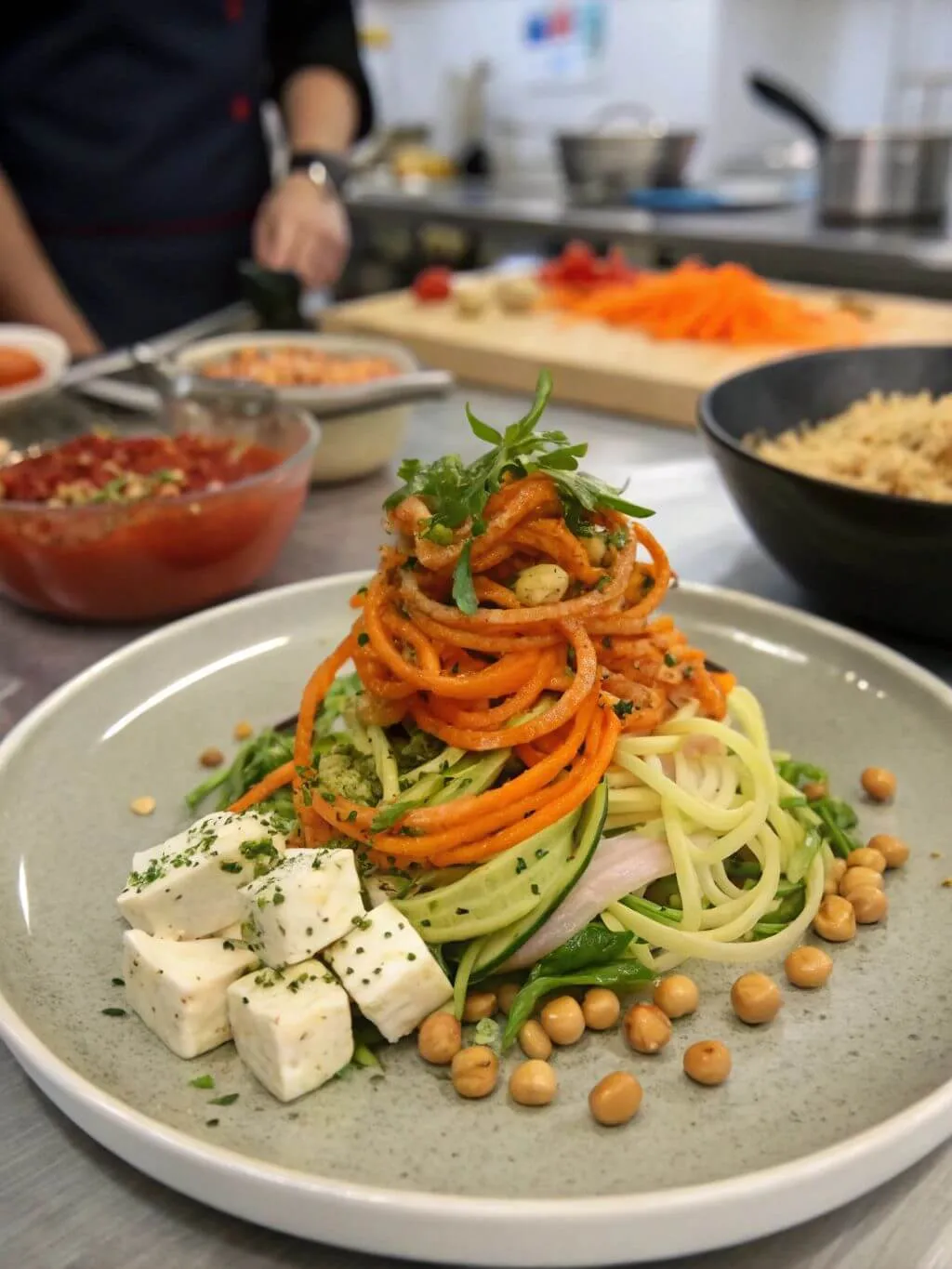
1 thought on “The Evolution of Noodles: Tracing a 4000-Year Journey Through Time and Culture”